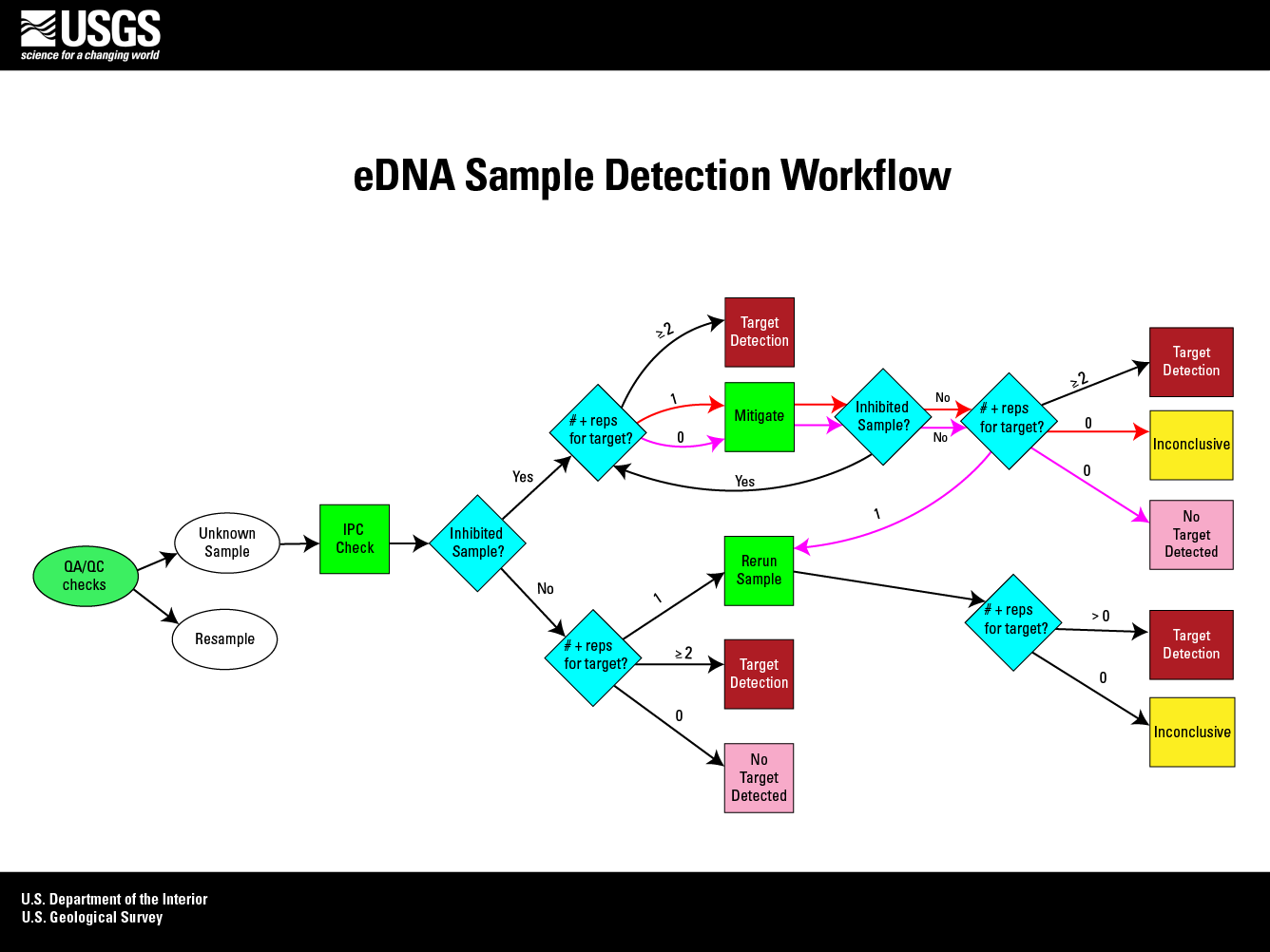eDNA Sample Detection Workflow

Detailed Description
The flowchart above is an example diagram of an eDNA sample detection workflow and the steps involved.
The thresholds (for example, the number of PCR reps that amplify for the target) that indicate a detection vs. inconclusive results should be decided upon before you begin sampling. They should also be informed by the risk tolerance of the jurisdictional agency. The thresholds shown in this diagram are for example purposes only.
-
The first step is to run the quality assurance and quality control (QA-QC) checks. If those checks fail, then you must resample. If the checks pass, move onto the next step.
-
Next, run an internal positive control (IPC) check which leads you to the next question: Is it an inhibited sample? An inhibited sample is a sample that has substances, such as humic acids, that negatively affects PCR detection and increases the chance of detecting false negatives.
-
If the sample is inhibited, the next step is to check the number of reps that positively amplified for the target. If the number of PCR reps that amplified is greater than or equal to two, then you’ve reached your target detection. If the number of PCR reps that amplified is zero or one, apply inhibition mitigation tools.
-
After applying mitigation tools, you must see if the sample is inhibited again. If it's an inhibited sample, return to find the number of reps that amplified for the target.
-
If it’s not an inhibited sample, check the number of reps that amplified for the target. If the number is one, rerun the sample. If the number is greater than or equal to two, you’ve reached the target detection. If the number is zero, there is no target detection, inconclusive.
-
-
If the first inhibited sample check was found not to be inhibited, check the number of reps that amplified for the target. If the number is greater than two, you’ve reached your target detection. If the number is zero, there is no target detection.
-
If the number is one, rerun the sample and check the number of reps that amplified for the target again.
-
If the number of reps that amplified is greater than zero, you’ve reached the target detection. If the number is zero, it’s inconclusive.
-
Sources/Usage
Public Domain.

